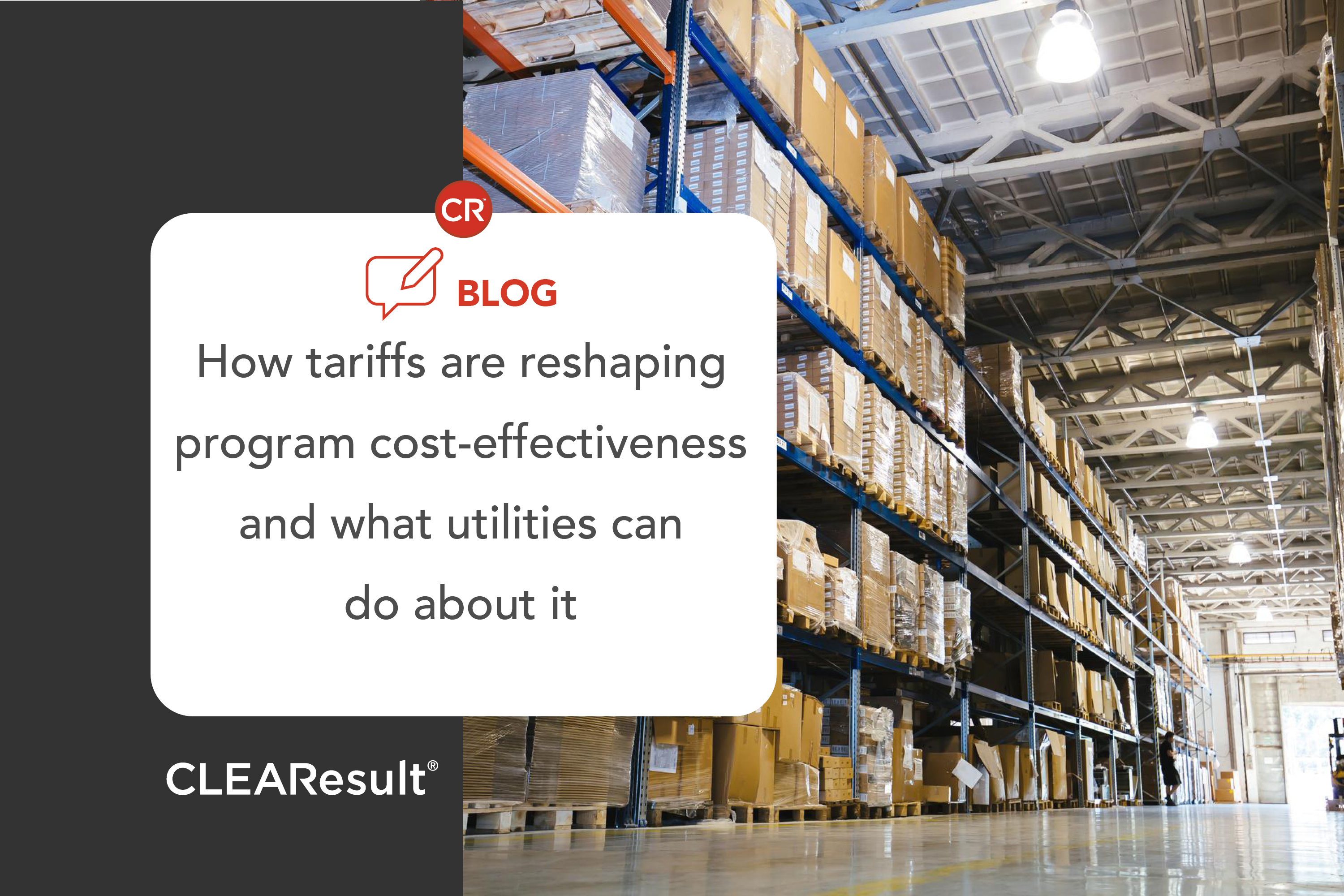How tariffs are reshaping program cost-effectiveness and what utilities can do about it

Tariff policy is shifting rapidly, and the cost landscape for utility programs is evolving in response. As global trade dynamics change, material costs, incentive structures and program performance are being impacted. Insights from our recent webinar, Understanding Tariff Impacts on Utility Program Cost-Effectiveness, highlight how these changes affect cost-effectiveness strategies and offer guidance for adapting to a fluid environment.
Here are four key insights to support utility teams in navigating uncertainty and maintaining program impact.
Tariffs are driving up costs and changing the math
Tariff increases directly affect the cost of energy-efficient products. This can alter the incremental cost (the difference between baseline and efficient equipment), which is a critical input in cost-effectiveness tests such as the Total Resource Cost (TRC) and Participant Cost Test (PCT).
Even modest tariff adjustments can reduce cost-effectiveness scores significantly. Ongoing monitoring and proactive program design adjustments are essential to maintaining compliance and performance.
Incentives can affect costs test in several ways
Some cost tests, like the TRC, don’t account for incentives and provide an opportunity to offset rising costs and sustain customer engagement when tariffs hit. Other tests do account for incentives but how they are treated may differ. To illustrate, the Utility Cost Test (UCT) or Ratepayer Impact Measure (RIM) treat incentives as a cost, while the PCT treats them as a benefit.
Programs that fully subsidize product costs, like direct install kits or a thermostat giveaway, should account for the impact of increased incentive values on cost-effectiveness scores. As your incentive amount rises to cover the rising cost of the measure, the UCT will show a decrease in cost-effectiveness but the PCT score will rise, reflecting greater benefit for participants. Understanding how these changes will affect each test is critical for utilities to understand as they make adjustments.
Retailers and manufacturers are responding in varied ways
Retailers and manufacturers are adapting to tariff changes through pricing adjustments, inventory shifts and sourcing strategies. Some manufacturers are using bonded warehouses to delay tariff payments, while some retailers are modifying stocking practices which can impact product availability.
Maintaining strong relationships with supply chain partners is critical for understanding sourcing decisions, pricing trends and inventory changes. This visibility supports accurate forecasting and responsive program management.
Flexibility is a strategic advantage
Given the volatility of tariff policy, flexible planning is essential. Scenario modeling, diversified measure offerings and real-time market feedback can help utility teams adapt quickly and effectively.
Recommended actions include:
- Re-evaluating high-cost measures and exploring low-capital options such as tune-ups or behavioral programs.
- Using cost-effectiveness tools to model tariff scenarios and identify risk areas.
- Coordinating with distributors and manufacturers to assess sourcing and pricing impacts.
Summary
Tariffs are reshaping the cost-effectiveness equation for utility programs. By understanding where tariff impacts are most significant and leveraging incentives and measure selection strategically, utility teams can continue delivering reliable, cost-effective energy savings.
CLEAResult remains committed to supporting utilities through these changes with expert guidance, market insights and proven solutions. Interested in learning more about how tariffs could affect your programs? Contact us to talk to one of our experts.
Watch the full webinar: